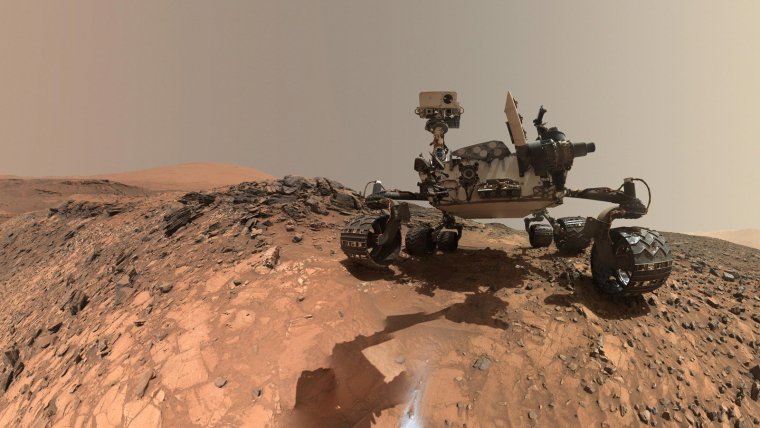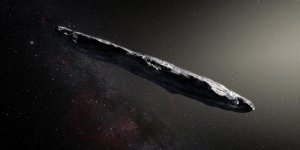| News / Space News |
NASA Scientists Discover Unexpected Mineral on Mars
NASA | JUNE 25, 2016
Scientists have discovered an unexpected mineral in a rock sample at Gale Crater on Mars, a finding that may alter our understanding of how the planet evolved.

This low-angle self-portrait of NASA's Curiosity Mars rover shows the vehicle at the site from which it reached down to drill into a rock target called "Buckskin." ![]()
NASA's Mars Science Laboratory rover, Curiosity, has been exploring sedimentary rocks within Gale Crater since landing in August 2012. In July 2015, on Sol 1060 (the number of Martian days since landing), the rover collected powder drilled from rock at a location named "Buckskin."
Analyzing data from an X-ray diffraction instrument on the rover that identifies minerals, scientists detected significant amounts of a silica mineral called tridymite.
This detection was a surprise to the scientists, because tridymite is generally associated with silicic volcanism, which is known on Earth but was not thought to be important or even present on Mars.
The discovery of tridymite might induce scientists to rethink the volcanic history of Mars, suggesting that the planet once had explosive volcanoes that led to the presence of the mineral.
YOU MAY ALSO LIKE



